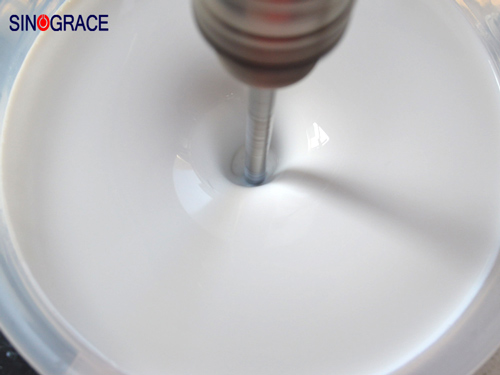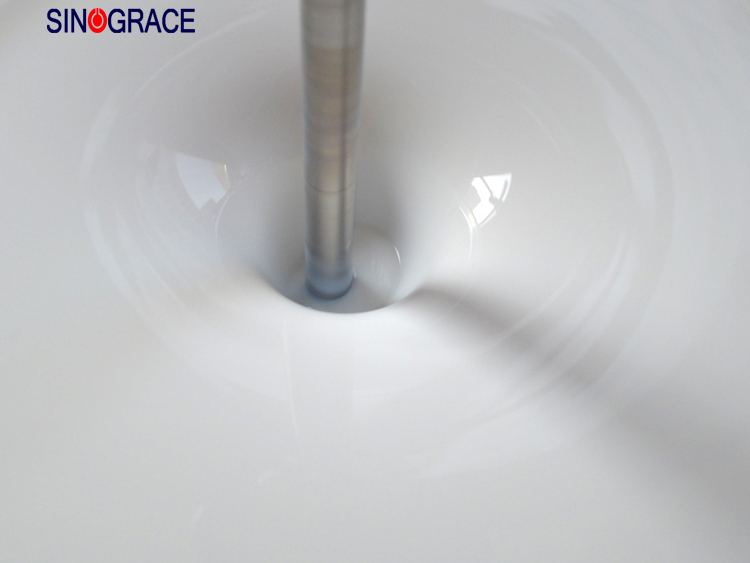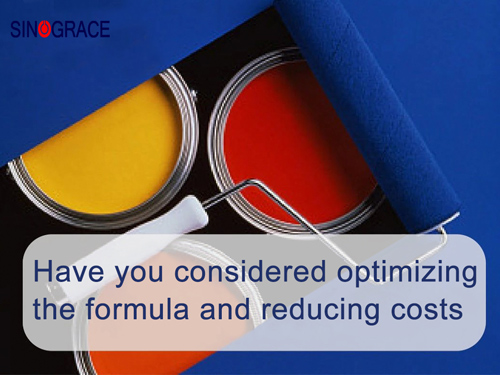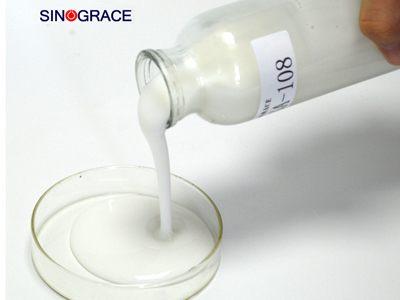
2023-05-12
Polyurethane is the short form of polyurethane (PU). It is a block polymer formed by addition polymerization. It is a polymer compound with flexible and elastic polyether or polyester as soft segment and rigid and hard carbamate as hard segment. It contains a considerable number of ammonia ester bonds. Waterborne polyurethane has been successfully applied in the textile printing and dyeing industry, it can give fabrics excellent softness, fullness, wash resistance, wear resistance, good resilience, smooth, good feel, antistatic, etc. Waterborne polyurethane in textiles mainly plays the following roles. Waterproof and permeable coating agent Waterborne polyurethane film forming property is good, the fabric after coating finish can form a durable film, has better water resistance, water droplets are not easy to penetrate, because the molecular structure of waterborne polyurethane contains more polar groups, water vapor can be diffused to the surface through the polyurethane amorphous area, so that the coated fabric has waterproof and moisture permeability function, can be used to manufacture clothing, raincoat, tent and other textiles. At the same time, it can be crosslinked with functional groups such as hydroxyl to improve the washing resistance. After forming a film, the fabric is more tightly organized and the gap is closed. After making a down jacket, pillowcase and quilt, the feathers are not easy to Pierce out. Wash and wear finisher In the traditional process, most of the anti-wrinkle finishing agents used are formaldehyde finishing agents. This finishing agent is harmful to the ecological environment and human body, and there are serious problems of fabric damage. Low molecular weight carbamate - based block copolymerization of elastic polymers can meet people's needs. This resin does not contain formaldehyde, has good film forming property and elasticity, is expected to give the fabric a certain wrinkle resistance, and improve the strength of the fabric, can greatly improve the wrinkle recovery Angle of finishing, wear resistance, and give the fabric excellent feel, it is effective on cotton, polyester cotton, polyester viscose and other fibers. Anti-shrinkage finishing agent for wool There are many resins used for wool shrinkage finishing, such as polyurethane, polyamide surface chlorol condensation, polyacrylate, polysiloxane and so on. Polyurethane anti-shrinkage agent finishing can be in place in one step, no pollution, anti-shrinkage agent molecular chain contains active groups, after finishing the surface of the wool fiber formed with a cross-linked network structure of polymer film, and the wool fiber between the chemical bond connection, so it has excellent anti-shrinkage effect, and anti-shrinkage durability is quite good. Anti-pilling agent Resin finishing is an effective way to improve the resistance of fabric to fuzz and pilling. The principle is that the fiber surface is coated with a layer of wear-resistant resin film, and t...
read more
2023-05-10
In nylon, PP and other plastics and metal substrate painting and bonding process of the industrial surface treatment industry, the role of the base coating agent is equivalent to the auxiliary additives. In the painting process to improve the combination between the paint and the substrate, the bonding process is to cooperate with the adhesive, improve the adhesion of the adhesive or glue to the substrate. Therefore, the base coating agent in the industry also has another name is adhesion primer. Before we understand the role of primer and the method of use, we can get some answers from its application cases: for example, the storage box of PP substrate in automotive interior trim and water-based polyurethane glue bonding problem; Toy car wheel spray silver oil, paint off. It can be known that the base coating agent can be a good solution to the adhesion problems encountered in the field of industrial painting and bonding. Now 中恩 treatment agent will talk about the base coating agent with you. One. What is a base coat? Bottom coating agent is usually called bottom coating primer or bottom coating adhesion primer, which usually has a certain film thickness (of course, there are also some bottom coating agent is no film thickness), can be constructed on the surface of the substrate by spraying or brushing, can wet the substrate, and assist to enhance the adhesion between the substrate and the paint or glue, improve the reliability. Common base coating agent: nylon base coating agent, PP base coating agent, metal base coating agent, etc. Two. What is the role of primer? The role of base coating agent according to the different surface treatment process to distinguish, in the adhesive process is mainly to improve the adhesive and the base material bonding strength, to solve the problem of difficult to stick to the base material degumming, has a good wettability and adhesion ability, through the base coating connection channel to promote the combination of the two. And in the spray painting process, it is by improving the surface of the substrate and enhancing the adhesion between layers to promote the adhesion of the paint and the substrate to achieve a firm coating. Three. Which substrates is the primer applied to? The most used materials in industrial production are plastic and metal, so the surface treatment to achieve finishing is also naturally these two categories of substrate. The substrate used more in plastics is nylon, PP, etc., of course, there are other plastic materials, not to mention one, in addition to plastic and metal bonding between the substrate. Four. What is the use method of base coating agent? The use of substrate is actually very simple, easy to operate, in the substrate surface spraying a layer of substrate coating after spraying or painting and adhesive can be. The specific amount needs to be determined according to the actual use of the situation, the general spray is 3-μm, and then dry after the next step of the process, ...
read more
2023-05-06
1.The role of acrylic resins in photocured inks.Acrylic resin is widely used in the manufacture of photocuring inks because of its unsaturated property and polymerization reaction under the action of ultraviolet light.It and other substances, such as polyether, carbamate, polyester, epoxy resin, modified epoxy resin, poly caprolactam copolymer, can be used as a photocuring ink resin component. 2.The role of acrylic resins in water-based inks.The copolymer of acrylic resin and other substances is used for alkali soluble water-based ink, and the copolymer emulsion of acrylic resin is used for water dispersed water-based ink 3.The role of acrylic resins in solvent - based inks. Most acrylic resins are soluble in aromatics, lipids and other solvents, and some soluble in alcohol solvents, mainly used in photogravure ink and flexographic ink manufacturing. Because of its transparent and colorless characteristics, it is also used in the manufacture of gloss oil. Sinograce Chemical is mainly engaged in the business of screen printing ink and other product series.Good materials, advanced production technology, and fine manufacturing techniques are used in the production of chemical liquids. Order Method
read more
2023-05-04
Application Acrylic emulsion is a kind of emulsion with wide applicability for construction. It can be used as a new chemical material for repairing steel structure concrete of hydraulic construction, port construction, highway, bridge, metallurgical chemical industry (urea chloro gangue) and other industrial civil buildings, such as seepage prevention, corrosion prevention and antifreeze. Classification According to the use of products can be classified into:Inner wall with emulsion, outer wall with emulsion, elastic emulsion, waterproof emulsion, closed emulsion, etc. According to the composition of products can be divided into:Pure propyl emulsion, silicone propyl emulsion, styrene propyl emulsion, vinegar propyl emulsion, etc. Additive for building emulsion Dispersing agent Defoaming agent Thickening agent Bactericide Filmerformer Multifunctional additive Leveling agent Wetting agent Construction Adhesive Powder Grout master stock Polymer mortar masterstock Adhesive masterstock The company specializes in chemical raw material industry We produce acrylic emulsion for use in the building industry, as well as various building additives Category complete one-stop supply Fast delivery, high quality and low price Welcome new and old customers to negotiate and guide!
read moreCopyright © 2015-2024 Anhui Sinograce Chemical Co., Ltd..All Rights Reserved.powered by dyyseo.com
top